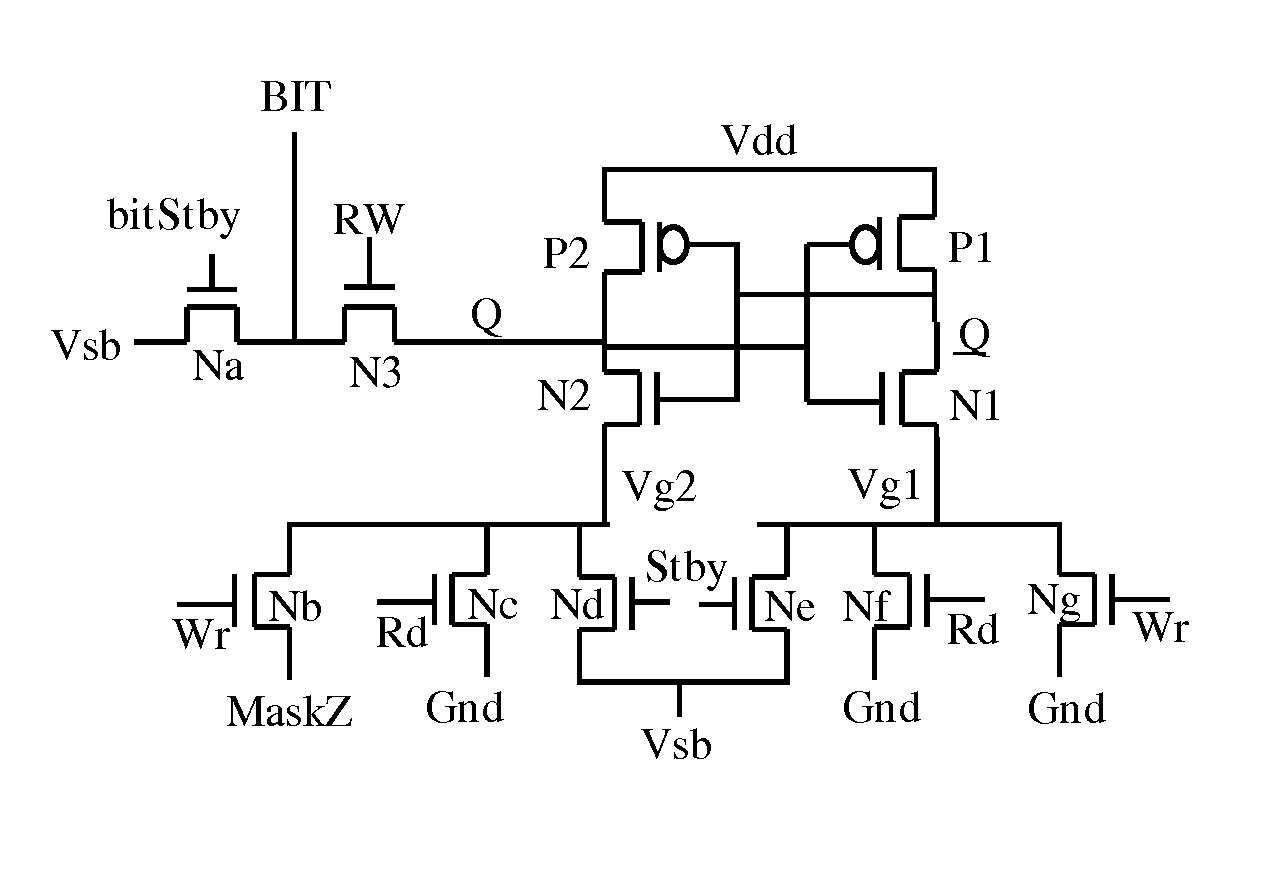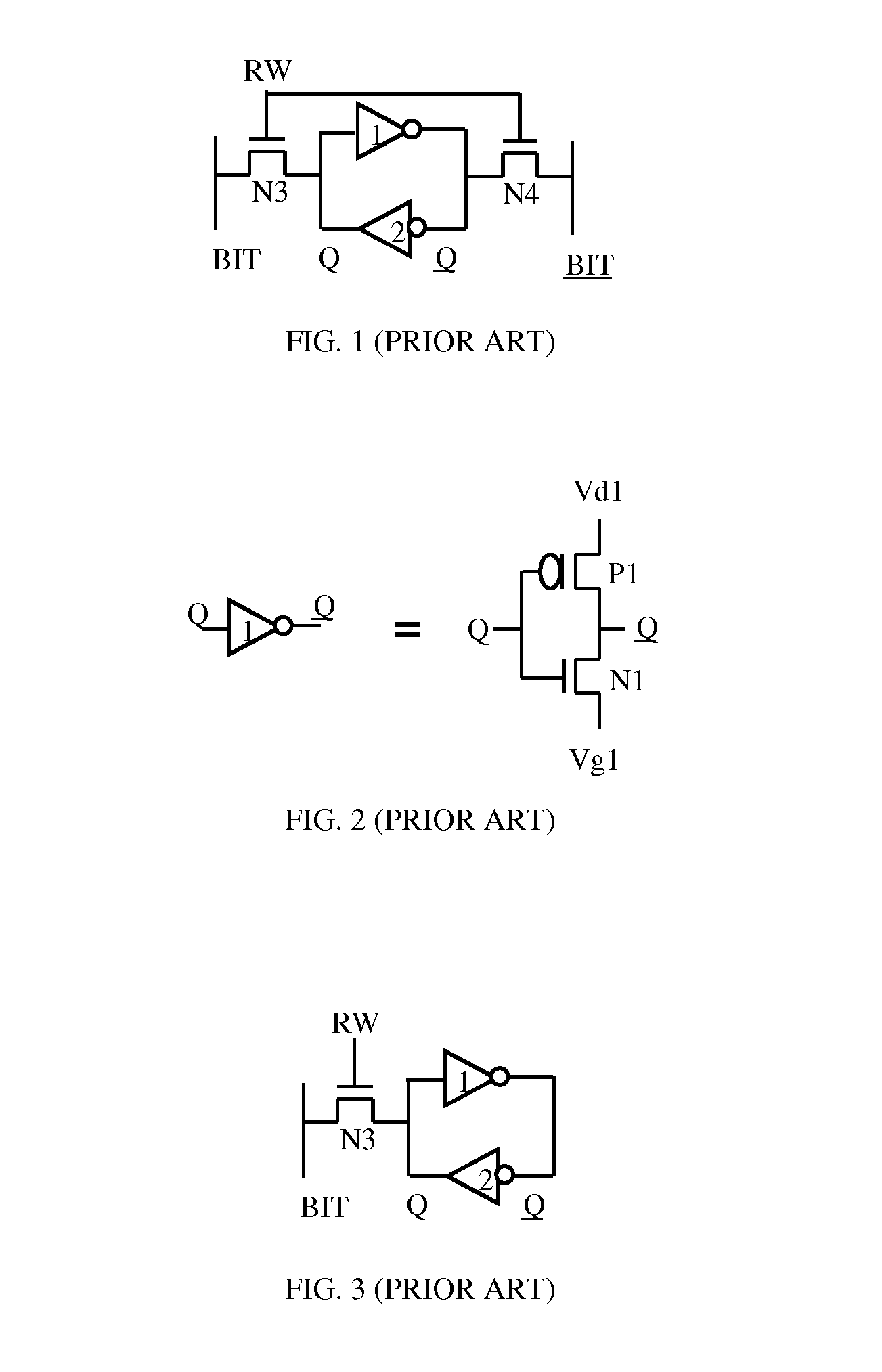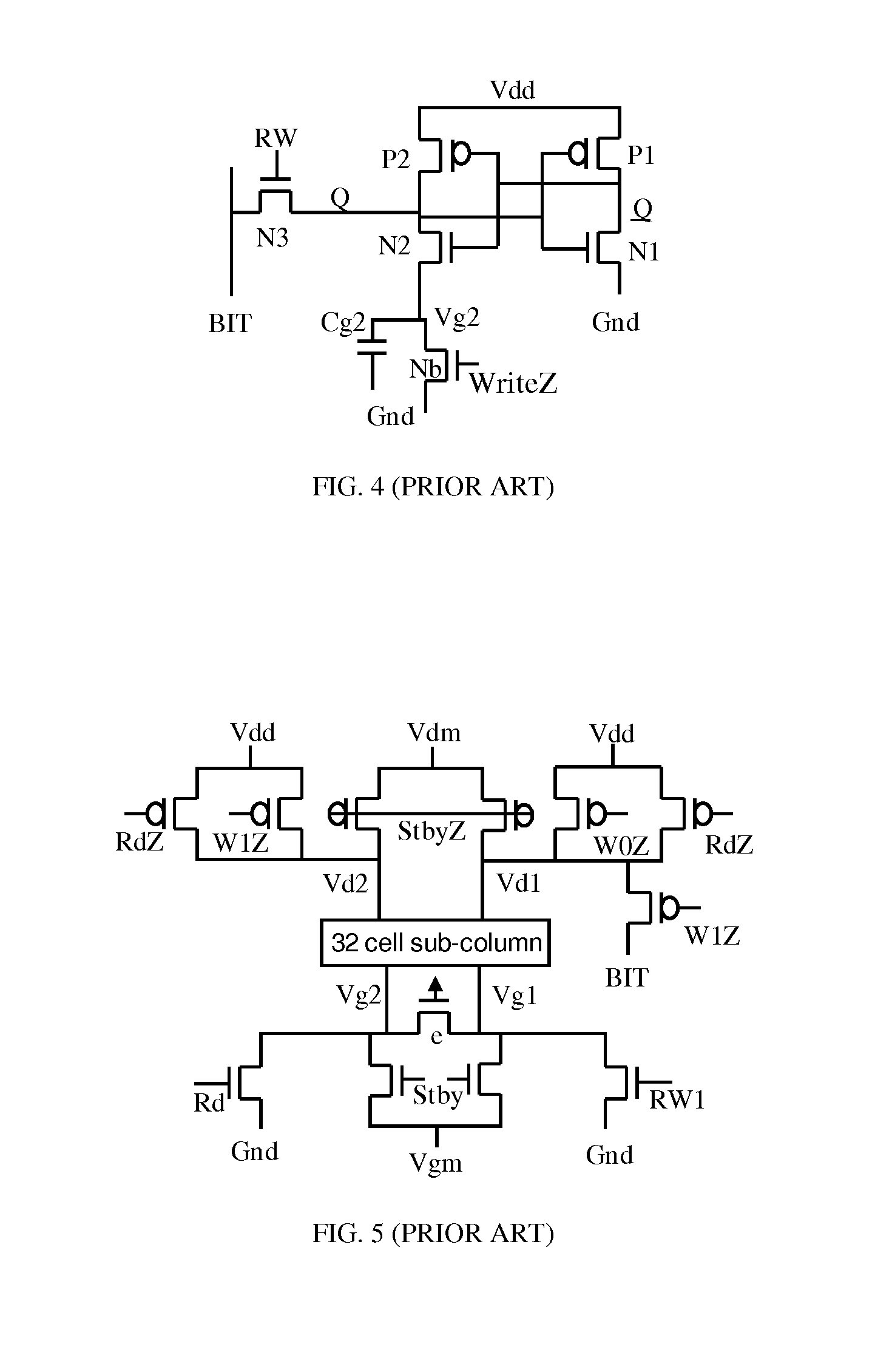SRAM cell with common bit line and source line standby voltage
a technology of source line and memory cell, which is applied in the direction of static storage, information storage, digital storage, etc., can solve the problems of failure to meet the low standby power objective, failure to write logic 1 value into the fig. 3 bit cell, and large transistors consuming additional integrated circuit silicon area and power, etc., to achieve maximum read-noise margin, reduce standby leakage power, and save space
- Summary
- Abstract
- Description
- Claims
- Application Information
AI Technical Summary
Benefits of technology
Problems solved by technology
Method used
Image
Examples
Embodiment Construction
[0026]Throughout the following description, specific details are set forth in order to provide a more thorough understanding of the invention. However, the invention may be practiced without these particulars. In other instances, well known elements have not been shown or described in detail to avoid unnecessarily obscuring the invention. Accordingly, the specification and drawings are to be regarded in an illustrative, rather than a restrictive, sense.
[0027]Large memories are hierarchically constructed from smaller memory building blocks (MBB). Within the lowest level of such a block, BIT lines may run through a column that is further divided into sub-columns. For example, a column containing 128 bit cells may be sub-divided into 2 64-bit or 4 32-bit sub-columns. During primary decoding, only 1 bit cell of a column is accessed at a time. Multiple columns are arranged in an array to form rows and columns. A row of bit cells may contain 1 or more words of bits, where a word is the sm...
PUM
 Login to View More
Login to View More Abstract
Description
Claims
Application Information
 Login to View More
Login to View More - R&D
- Intellectual Property
- Life Sciences
- Materials
- Tech Scout
- Unparalleled Data Quality
- Higher Quality Content
- 60% Fewer Hallucinations
Browse by: Latest US Patents, China's latest patents, Technical Efficacy Thesaurus, Application Domain, Technology Topic, Popular Technical Reports.
© 2025 PatSnap. All rights reserved.Legal|Privacy policy|Modern Slavery Act Transparency Statement|Sitemap|About US| Contact US: help@patsnap.com



